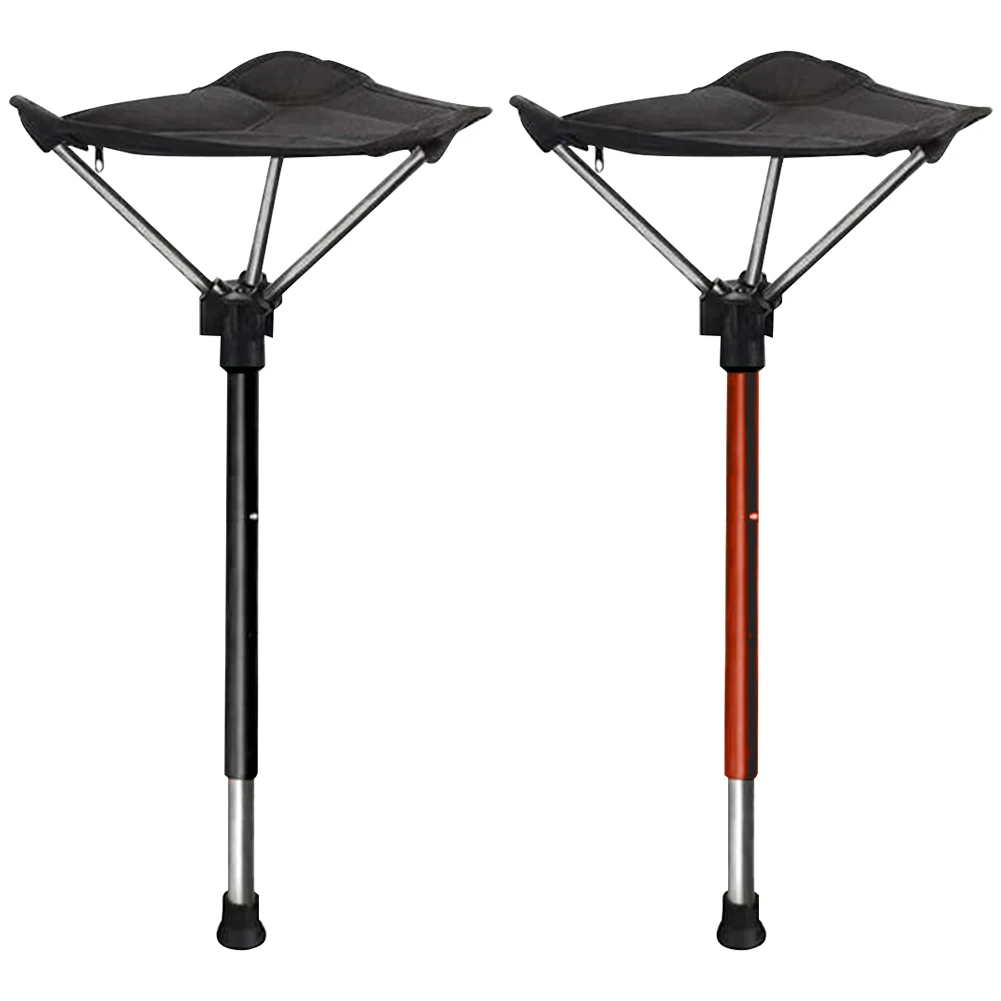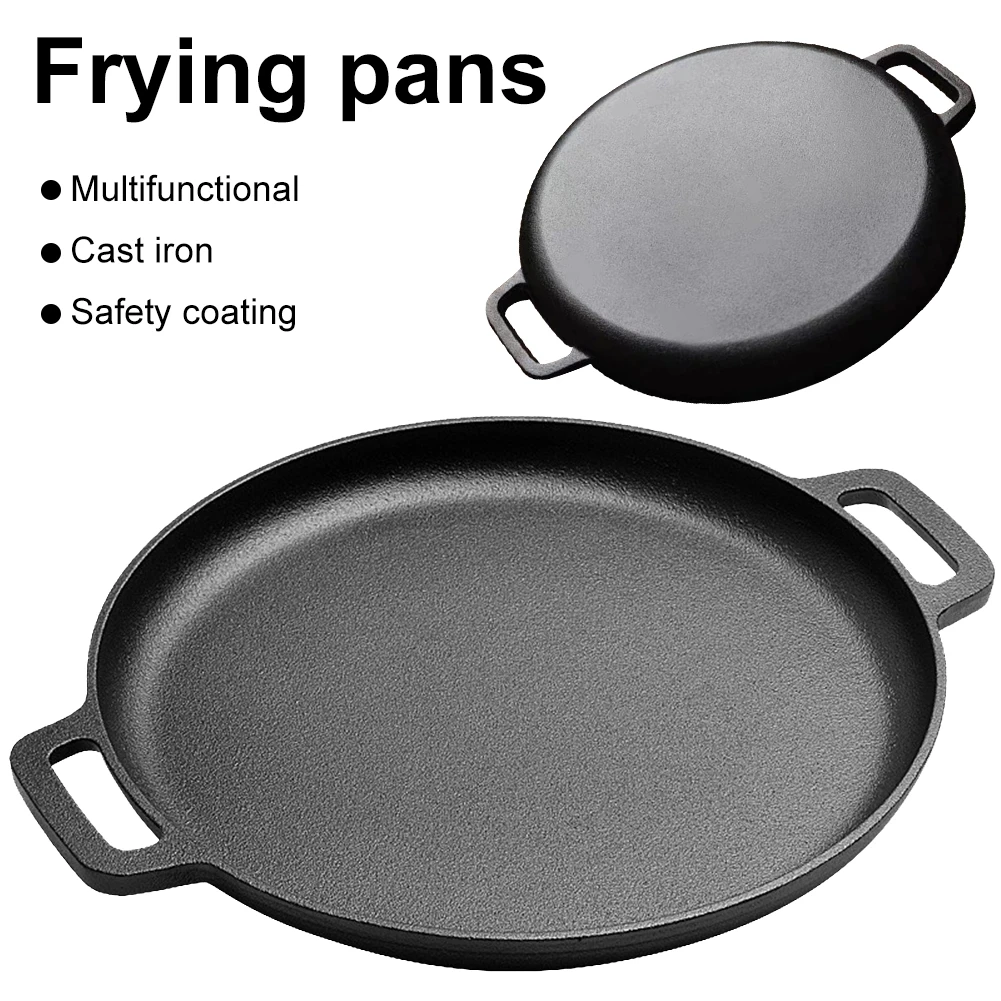Hey there, future outdoor explorers! Thinking about hitting the trails but feeling a bit queasy about finding your way? You’re not alone. Navigation can seem daunting, like some ancient art only known to grizzled mountain men. But honestly, it’s a skill anyone can learn—and with the right approach, it can even be fun. This guide is all about getting you started, step by step, without all the confusing jargon. We’ll cover the essentials, from maps and compasses to GPS and common sense, so you can camp with confidence and return with stories to tell.
Why Navigation Skills Matter (More Than Just Getting Back to the Car)
Okay, so obviously, nobody wants to get lost. But navigation is about so much more than just avoiding a wrong turn. It’s about safety, sure, but it’s also about freedom, confidence, and truly experiencing the wilderness. When you know where you are and where you’re going, you can relax and enjoy the journey, rather than constantly second-guessing yourself. You know what I mean? It’s the difference between being a passive observer and an active participant in your adventure.
Think about it: With solid navigation skills, you can:
- Choose your own route, discovering hidden gems and avoiding crowded trails.
- Respond effectively to unexpected situations, like sudden weather changes or trail closures.
- Estimate your travel time and distance accurately, ensuring you have enough supplies.
- Feel a sense of accomplishment and self-reliance, knowing you can handle whatever the wilderness throws your way.
And let’s be real, being able to confidently pull out a map and compass, while everyone else is staring blankly at their phones, is a pretty sweet feeling. Plus, technology can fail, batteries die, but a map and compass? Always reliable. So, let’s get started, shall we?
The Dynamic Duo: Maps and Compasses
Alright, listen up! These are the bread and butter of backcountry navigation. Yes, GPS is cool, but a map and compass are your ultimate backups (and honestly, should be your primary tools for true wilderness experiences). Think of them as peanut butter and jelly – great on their own, but even better together.
Understanding Topographic Maps
Topographic maps (or “topo maps”) are like magical treasure maps that show you the shape of the land. They use contour lines to represent elevation – the closer the lines, the steeper the terrain. Learning to read these maps is like learning a new language, but trust me, it’s worth the effort.
Here’s what to look for:
- Contour Lines: These lines connect points of equal elevation. The closer they are together, the steeper the slope.
- Elevation: Numbers on the contour lines tell you the elevation above sea level.
- Symbols: Maps use symbols to represent features like rivers, lakes, forests, roads, and buildings.
- Scale: The scale tells you the relationship between distances on the map and distances on the ground (e.g., 1:24,000 means 1 inch on the map equals 24,000 inches, or about 2,000 feet, on the ground).
Pro Tip: Practice reading topo maps in your local park before heading into the backcountry. It’s much easier to learn when you’re not under pressure.
The Compass: More Than Just a Direction Finder
A compass is essentially a magnetized needle that aligns with the Earth’s magnetic field, always pointing towards magnetic north. But it’s more than just a direction finder; it’s a precision instrument that, when used with a map, can pinpoint your location and guide you to your destination.
Key parts of a compass:
- Baseplate: The clear plastic base that you lay on the map.
- Magnetic Needle: The red and white needle that points to magnetic north.
- Rotating Bezel (or Compass Housing): The outer ring with degree markings (0-360).
- Orienting Arrow: An arrow inside the bezel that you align with north on the map.
- Index Line: The line on the baseplate that you use to read your bearing.
Taking a Bearing: Finding Your Way
Okay, here’s where the magic happens. “Taking a bearing” means determining the direction from your current location to a specific point, which you then follow using your compass. It sounds complicated, but it’s actually pretty straightforward. Here’s a basic overview:
- Orient the Map: Place your map on a flat surface and use your compass to align it with true north.
- Identify Your Location and Destination: Find your current location and your desired destination on the map.
- Place the Compass: Lay the baseplate of your compass on the map so that the edge of the baseplate connects your current location and your destination.
- Rotate the Bezel: Rotate the bezel until the orienting arrow lines up with magnetic north on the map (accounting for declination – more on that later).
- Follow the Bearing: Remove the compass from the map. Hold it flat in your hand and turn your body until the red end of the magnetic needle aligns with the orienting arrow. The direction-of-travel arrow on the compass baseplate now points towards your destination.
Important Note: Practice these steps in a controlled environment before relying on them in the wilderness. Start with easy, short distances. Honestly, the more you practice, the better you become.
GPS Devices: Tech to the Rescue (But Don’t Rely on It Alone)
Alright, let’s talk tech! GPS (Global Positioning System) devices can be incredibly helpful for navigation, especially in unfamiliar territory. They use satellites to pinpoint your location, track your progress, and guide you along a pre-planned route. But here’s the thing: GPS is a tool, not a crutch. You should never rely on it exclusively, because batteries die, signals get lost, and devices malfunction. Think of it as a helpful assistant, but not the boss.
Choosing the Right GPS Device
There’s a ton of GPS devices out there, so finding the right one for you can be overwhelming. Here are a few things to consider:
- Durability: Look for a device that’s rugged and waterproof, able to withstand the bumps and bruises of backcountry travel.
- Battery Life: Choose a device with long battery life, or bring extra batteries.
- Screen Size and Clarity: Make sure the screen is easy to read in bright sunlight and with polarized sunglasses.
- Ease of Use: Pick a device with an intuitive interface that you can easily navigate, even with gloved hands.
- Mapping Capabilities: Some GPS devices come with pre-loaded maps, while others allow you to download them.
Brand Recommendations: Garmin is a well-known brand, offering everything from basic handheld GPS units to advanced GPS watches. Suunto is another reputable brand with a focus on outdoor adventure. Explore both and see which one fits you best.
Key GPS Features for Camping
These features can seriously up your navigation game:
- Waypoints: Mark important locations, like campsites, water sources, or trail junctions.
- Track Recording: Record your path as you hike, allowing you to retrace your steps if needed.
- Route Planning: Create custom routes on your computer and upload them to your GPS device.
- Altimeter and Barometer: These sensors provide information about your elevation and the atmospheric pressure, which can help you predict weather changes.
Using GPS Responsibly
Here’s the deal: GPS can make navigation easier, but it shouldn’t replace your other skills. Always carry a map and compass, and know how to use them. Practice navigating with your GPS in familiar areas before heading into the backcountry. And for goodness’ sake, don’t become so reliant on technology that you lose your connection to the natural world. Look up, appreciate the scenery, and engage with your surroundings! It’s why you came out here, right?
Trail Marking Systems: Breadcrumbs in the Wilderness
Trail markings are like breadcrumbs that guide you along established paths. They vary depending on the region and the managing authority, but understanding common trail marking systems can greatly simplify your navigation. Here’s the thing: don’t blindly follow trail markings without paying attention to your surroundings. They can sometimes be misleading or missing altogether. And hey, sometimes nature reclaims its territory!
Common Types of Trail Markings
Recognizing different types of blazes and markers can help you stay on the right track:
- Blazes: Painted marks on trees, rocks, or posts. Colors and shapes vary, but white and blue are common.
- Duct Tape: Strips of colored duct tape around trees that will degrade over time
- Cairns: Piles of rocks used to mark trails above the treeline or in rocky areas.
- Flags and Ribbons: Strips of colored flagging tape tied to branches or bushes.
- Signs: Posted signs with trail names, distances, and directions (usually found at trailheads and junctions).
Decoding the Clues
Trail markings can provide valuable information, but you need to know how to interpret them. Watch out for these signals:
- Double Blazes: Often indicate a turn, junction, or obscured section of the trail.
- Offset Blazes: May indicate a change in direction (e.g., the trail veers slightly to the left or right).
- Missing Blazes: A missing blaze could mean you’ve strayed off the trail, so stop and retrace your steps until you find the last visible marker.
Important Reminder: Never create your own trail markings. This can confuse other hikers and damage the environment. It’s a big no-no. Leave No Trace, remember?
When Trail Markings Disappear
Sometimes, trail markings vanish altogether. This can happen due to weather, vandalism, or simply poor maintenance. If you lose the trail, don’t panic. Stop, take a deep breath, and try these strategies:
- Retrace Your Steps: Go back to the last visible blaze and look for the trail from there.
- Consult Your Map and Compass: Use your navigation skills to determine the general direction of the trail and look for terrain features that match the map.
- Look for Subtle Clues: Scan the ground for faint footprints, worn patches of vegetation, or other signs of human passage.
Staying Found: Proactive Measures and Situational Awareness
Okay, let’s talk about prevention. Staying found is about more than just knowing how to use a map and compass; it’s about proactive measures, situational awareness, and making smart decisions before and during your hike. It’s like being a good driver – you don’t just react to what’s happening around you; you anticipate potential problems and take steps to avoid them.
Planning is Paramount
Before you even set foot on the trail, take the time to plan your route carefully. This includes:
- Studying the Map: Familiarize yourself with the terrain, elevation changes, water sources, and potential hazards.
- Checking the Weather Forecast: Be aware of potential weather changes and pack accordingly.
- Telling Someone Your Plans: Let a friend or family member know where you’re going and when you expect to be back.
- Packing Essentials: Carry the “Ten Essentials,” including a map, compass, first-aid kit, extra food and water, rain gear, and a headlamp.
Pro Tip: Use online resources like AllTrails or Gaia GPS to research trails and read recent trip reports. This can give you valuable insights into current trail conditions.
Situational Awareness: Keeping Your Eyes Open
While you’re hiking, pay attention to your surroundings. This means:
- Observing Landmarks: Note distinctive features like rock formations, waterfalls, or unusual trees.
- Tracking Your Progress: Regularly check your map and compass to confirm that you’re on the right track.
- Monitoring the Weather: Watch for changes in the weather, and be prepared to adjust your plans if necessary.
- Listening to Your Gut: If something doesn’t feel right, trust your instincts. It’s better to be cautious than to push on blindly.
Making Smart Decisions on the Trail
Sometimes, you’ll have to make decisions on the fly. Here are a few things to keep in mind:
- Turn Back if Necessary: There’s no shame in turning around if the weather turns bad, the trail becomes too difficult, or you simply feel uncomfortable.
- Stay on the Trail: Avoid taking shortcuts or wandering off the trail, as this can increase your risk of getting lost.
- Conserve Energy: Pace yourself, take breaks, and stay hydrated. It’s easy to make mistakes when you’re tired and thirsty.
Emergency Response: What to Do When Things Go Wrong
Even with the best planning and preparation, things can still go wrong. Knowing how to respond in an emergency can make the difference between a minor inconvenience and a serious situation. Let’s face it, the wilderness can be unpredictable. It’s about being prepared and knowing how to react calmly and effectively.
The S.T.O.P. Method
If you realize you’re lost or in trouble, the first thing to do is S.T.O.P.:
- Stop: Don’t panic! Take a deep breath and gather your thoughts.
- Think: Assess the situation. How did you get here? What resources do you have?
- Observe: Look around. What landmarks do you see? What direction did you come from?
- Plan: Make a plan of action. What’s the best way to get back on track, or to signal for help?
Signaling for Help
If you need to signal for help, here are a few options:
- Whistle: Three blasts of a whistle is a universal distress signal.
- Mirror: Use a mirror or any reflective surface to flash sunlight towards potential rescuers.
- Fire: Build a smoky fire (if conditions allow) to attract attention from a distance.
- SOS Signal: Create a large SOS signal on the ground using rocks, branches, or brightly colored clothing.
Staying Warm and Dry
Hypothermia is a serious threat in the wilderness, even in mild temperatures. Here’s how to stay warm and dry:
- Put on Extra Layers: Wear waterproof and windproof clothing to protect yourself from the elements.
- Build a Shelter: Create a makeshift shelter using branches, leaves, or tarps to provide protection from the wind and rain.
- Start a Fire: If possible, build a fire for warmth and morale.
- Stay Active: Keep moving to generate body heat, but avoid overexertion.
Conserving Food and Water
If you’re stranded in the wilderness, it’s important to conserve your food and water supplies. Ration your food carefully, and look for alternative water sources (like streams or snow) – but always purify water before drinking it. It’s better to be safe than sorry, right?
Camp Security: Protecting Yourself and Your Belongings
Camp security is often overlooked, but it’s an important aspect of camping safety. It’s not about being paranoid; it’s about taking reasonable precautions to protect yourself, your belongings, and the environment. Think of it as locking your doors at home – it’s a simple step that can prevent a lot of trouble.
Choosing a Safe Campsite
The first step in camp security is choosing a safe campsite. Look for:
- A Level Spot: Choose a flat area to pitch your tent, away from slopes or potential rockfall areas.
- Protection from the Elements: Look for a site that’s sheltered from the wind and rain.
- Proximity to Water: Campsites should be at least 200 feet away from water sources to prevent contamination.
- Avoidance of Hazards: Stay away from dead trees (widowmakers), insect nests, and animal trails.
Bear Safety
If you’re camping in bear country, take these precautions:
- Store Food Properly: Use a bear-resistant canister or hang your food in a tree, at least 10 feet off the ground and 4 feet from the trunk.
- Keep a Clean Camp: Clean up any food scraps or spills immediately.
- Never Feed Bears: Feeding bears is dangerous and illegal.
- Carry Bear Spray: If you’re hiking in bear country, carry bear spray and know how to use it.
Protecting Your Gear
Keep your gear safe by:
- Locking Valuables: Store valuable items in your car or a hidden compartment.
- Keeping Gear Organized: Keep your campsite tidy to prevent tripping hazards and deter theft.
- Using a Tent Lock: Secure your tent with a small padlock when you’re away from camp.
Being Aware of Your Surroundings
Pay attention to your surroundings and report any suspicious activity to the authorities. Trust your instincts, and don’t hesitate to leave if you feel uncomfortable or unsafe.
Advanced Survival Insights
While the basics are essential, what are some more advanced techniques to consider? Think of these as the next level of preparedness. These skills can be invaluable in situations where basic navigation isn’t enough, and you need to rely on your wits and resourcefulness.
Celestial Navigation
Celestial navigation uses the positions of stars, planets, the sun, and the moon to determine your location and direction. It requires a deep understanding of astronomy and specialized tools like a sextant, but it can be a lifesaver if you’re lost in a remote area without a map or compass. While it sounds like something out of a pirate movie, the underlying principles are fascinating and applicable even with modern tech. You know what I mean? Understanding why these methods work builds a deeper appreciation for navigation itself!
Wilderness First Aid
Basic first aid is essential, but wilderness first aid takes it a step further. It involves treating injuries and illnesses in remote environments with limited resources. This includes skills like splinting fractures, treating severe wounds, managing hypothermia and heatstroke, and dealing with altitude sickness. A wilderness first aid course can provide you with the knowledge and skills you need to handle medical emergencies in the backcountry.
Advanced Fire Starting
Knowing how to start a fire is crucial for warmth, cooking, and signaling for help. Advanced fire starting techniques involve using natural materials like friction-based methods (bow drill, hand drill) to create a spark without matches or a lighter. This requires practice and patience, but it can be a valuable skill in a survival situation. Ever tried rubbing sticks together to make fire? It’s harder than it looks, but incredibly rewarding when you succeed.
Finding and Purifying Water
In a survival situation, finding and purifying water is critical. Advanced techniques include building solar stills to collect condensation, identifying edible plants with high water content, and creating filtration systems using natural materials. Knowing how to find and purify water can significantly increase your chances of survival in the wilderness.
One last note: All these advanced survival skills require extensive training and practice. Don’t attempt them without proper instruction. Start with the basics, build your skills gradually, and always prioritize safety. And remember, the best way to survive in the wilderness is to avoid getting into a survival situation in the first place. Plan carefully, be prepared, and stay aware of your surroundings. Happy trails!
Frequently Asked Questions
<div class="faq-question"><b>What are the most important items to pack for navigation?</b></div>
<div class="faq-answer">A topographic map of the area, a compass with adjustable declination, a GPS device (with extra batteries), a whistle, and a signaling mirror are essential for safe navigation.</div>
<div class="faq-question"><b>How do I adjust my compass for declination?</b></div>
<div class="faq-answer">Declination is the angle between true north and magnetic north. Locate the declination value for your area (usually on the map), then adjust your compass accordingly. Rotate the compass bezel until the orienting arrow is offset by the declination angle.</div>
<div class="faq-question"><b>What should I do if my GPS device fails?</b></div>
<div class="faq-answer">Always carry a map and compass as a backup. If your GPS fails, switch to using your map and compass skills to navigate. This is why learning these skills is crucial, even with modern technology.</div>
<div class="faq-question"><b>How do I identify poisonous plants?</b></div>
<div class="faq-answer">Familiarize yourself with common poisonous plants in your area, such as poison ivy, poison oak, and poison sumac. Avoid touching any unfamiliar plants, and teach children to do the same. Resources such as field guides and online databases can help with identification.</div>
<div class="faq-question"><b>What is the best way to store food in bear country?</b></div>
<div class="faq-answer">In bear country, store food in a bear-resistant canister or hang it from a tree. Hang your food at least 10 feet off the ground and 4 feet from the tree trunk, using a rope and bag system. Always store food away from your tent.</div>
<div class="faq-question"><b>How can I prevent hypothermia while camping?</b></div>
<div class="faq-answer">Dress in layers of moisture-wicking clothing, stay dry, and avoid overexertion. Carry extra clothing, including a hat and gloves. If you start to feel cold, seek shelter, change into dry clothes, and consume warm drinks and food.</div>
<div class="faq-question"><b>What are the Leave No Trace principles?</b></div>
<div class="faq-answer">The Leave No Trace principles include planning ahead and preparing, traveling and camping on durable surfaces, disposing of waste properly, minimizing campfire impacts, respecting wildlife, and being considerate of other visitors. Following these principles helps protect the environment for future generations.</div>
DISCLAIMER
This article is intended for informational purposes only and does not constitute professional advice. Camping and wilderness navigation involve inherent risks. Always consult with experienced guides, take appropriate training, and thoroughly research your destination before embarking on any outdoor adventure. The author and publisher are not responsible for any injury, loss, or damage resulting from the use of this information. Safety is your responsibility.
Categories
- Navigation & Safety (38)
- Shelter & Sleep (40)
Recent Comments
Archives
Top rated products
-
 V080 Carbon Fibre GPS Remote Control Bait Boat 150 Locating Points 2KG Load Auto Return 12V Night Fishing Carp Boat Fish Finder
Rated 3.40 out of 5$898.43 – $1,162.67Price range: $898.43 through $1,162.67
V080 Carbon Fibre GPS Remote Control Bait Boat 150 Locating Points 2KG Load Auto Return 12V Night Fishing Carp Boat Fish Finder
Rated 3.40 out of 5$898.43 – $1,162.67Price range: $898.43 through $1,162.67 -
 Outdoor Running Breathable Vest Men Bag Water Bottle Storage Backpack Hydration Water Bag Hiking Marathon Sports Tactical Vest
Rated 3.20 out of 5$36.65
Outdoor Running Breathable Vest Men Bag Water Bottle Storage Backpack Hydration Water Bag Hiking Marathon Sports Tactical Vest
Rated 3.20 out of 5$36.65 -
 Outdoor Vintage Camping Lights Stepless Dimming Portable Ambient Lights Type-C Rechargeable Hand Light Camping Tent Light
Rated 3.00 out of 5$20.36 – $55.87Price range: $20.36 through $55.87
Outdoor Vintage Camping Lights Stepless Dimming Portable Ambient Lights Type-C Rechargeable Hand Light Camping Tent Light
Rated 3.00 out of 5$20.36 – $55.87Price range: $20.36 through $55.87
Product Gallery
-
 SUP water ski, double-layer paddle board, inflatable high-density EVA surfboard, anti slip pad
$134.94 – $154.77Price range: $134.94 through $154.77
SUP water ski, double-layer paddle board, inflatable high-density EVA surfboard, anti slip pad
$134.94 – $154.77Price range: $134.94 through $154.77
-
 In Stock inflatable sup boards paddleboards standup paddle board waterplay surfing Isup Surf board with standard accessories
$445.84 – $453.22Price range: $445.84 through $453.22
In Stock inflatable sup boards paddleboards standup paddle board waterplay surfing Isup Surf board with standard accessories
$445.84 – $453.22Price range: $445.84 through $453.22
-
 Spatium 2-3 Persons Inflatable Kayak Canoe High Strength DropStitch Floor Inflatable Kayak For Fishing
Rated 5.00 out of 5$2,114.27
Spatium 2-3 Persons Inflatable Kayak Canoe High Strength DropStitch Floor Inflatable Kayak For Fishing
Rated 5.00 out of 5$2,114.27


 Camping Gear
Camping Gear Camping Chair
Camping Chair Camping Table
Camping Table Sleeping Bags
Sleeping Bags Camping Bed
Camping Bed Sleeping Gear
Sleeping Gear Camping Trolley
Camping Trolley Storage Bags
Storage Bags BBQ Portable
BBQ Portable Camping Tents
Camping Tents Gazebos
Gazebos Outdoor Cooler
Outdoor Cooler Cookware
Cookware Power
Power Camping Light
Camping Light Flashlight
Flashlight Portable Solar
Portable Solar Power Banks
Power Banks
 Fish Finders
Fish Finders Fishing Bags
Fishing Bags Fishing Jerseys
Fishing Jerseys Fishing Reels
Fishing Reels Fishing Chairs
Fishing Chairs Fishing Bait Boat
Fishing Bait Boat Fishing Floats
Fishing Floats Hard Baits
Hard Baits
 Hiking Vests
Hiking Vests Outdoor Bags
Outdoor Bags Water Filters
Water Filters Paracord
Paracord Walkie Talkie
Walkie Talkie
 Paddleboards
Paddleboards Boats
Boats Sea Scooter
Sea Scooter Accessories
Accessories
 Electric Bike
Electric Bike Electric Scooter
Electric Scooter

















